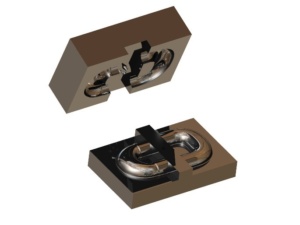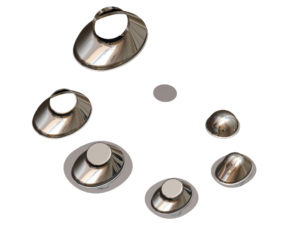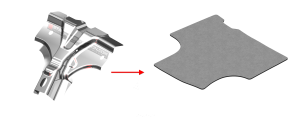How Simulation Technology Has Changed the Face of Custom Metal Stamping
Contents
The roots of metal stamping can be traced back thousands of years, but past and present could not be more different. Simulations, in particular, have completely altered the playing field, allowing for faster production with fewer errors, which brings an array of benefits. In this article, we discuss the effects that simulation technology has had on custom metal stamping and how manufacturers use this technology to provide better products at more affordable prices.
There are three key areas to sheet metal simulation technology and we will discuss each one in detail, and reveal the efficiency improvements by using such technology.
Blank shape and size calculation
The most fundamental requirement for any sheet metal part—be it fabricated or stamped in mass production, is to determine the correct blank shape and size. Simulation has evolved to the point where determining the developed blank shape using shop floor trial and error, is an extreme disadvantage. The time and cost savings from using simulation to adjust, develop and determine the correct blank and trim profiles are as great as 60%, and at worst a 30% reduction in time and cost, on the shop floor.
Die Face Design
The earliest simulation methods required the use of 3D CAD software to create the tooling surfaces prior to simulation. Each tooling stage was modeled in CAD, then imported to simulation software. Complex tooling surfaces may take tens of hours to create in CAD and when we consider that the tooling surface may not “work”, we can double the hours required in CAD for trial and error.
However, the evolution of simulation software (such as AutoForm) has lead to a streamlined and efficient workflow, allowing complex tooling surface to be generated within the simulation software, and eliminating the use of CAD until the final step. The time and cost savings from using advanced die face tools in the simulation is a minimum of 40% and as much as 70% when compared to only using CAD tools to generate tooling data.

Complete Process Simulation
Incremental simulation software is able to simulate each process step in a complete sheet metal tooling design. However, not all simulation software handles multiple forming stages efficiently. Some simulation software requires the user to import and setup multiple stages tediously, without any “smart” software features to assist with multi-stage forming.
Advanced simulation software, such as AutoForm, automatically detect common features of a sheet metal part, and assign features to individual operations, partially setting up the required forming operations automatically. The time saving of such advanced software is significant and results in a minimum improvement of 45% less time spent tediously setting up multiple forming operations when compared to software without such features.

Stamping Simulations can help with your next project that requires metal forming. Contact us today for more information.
Related Article: https://stampingsimulation.com/viking-tooling-9799/

